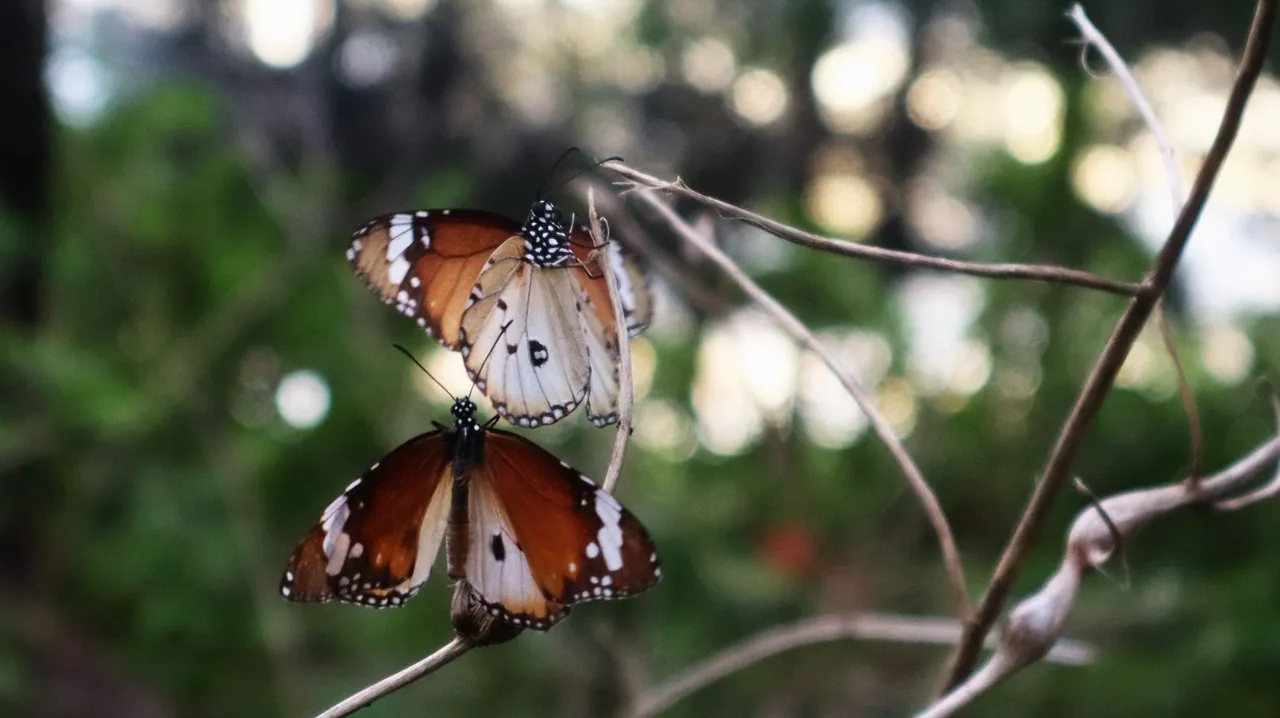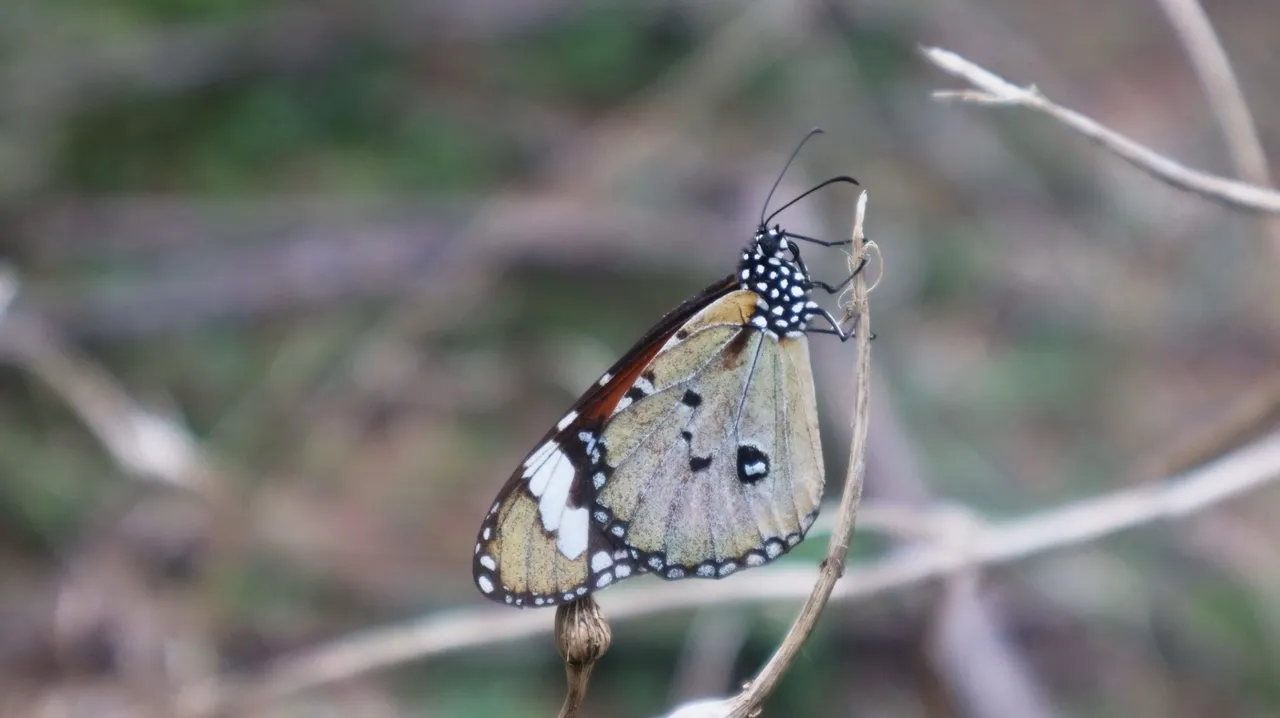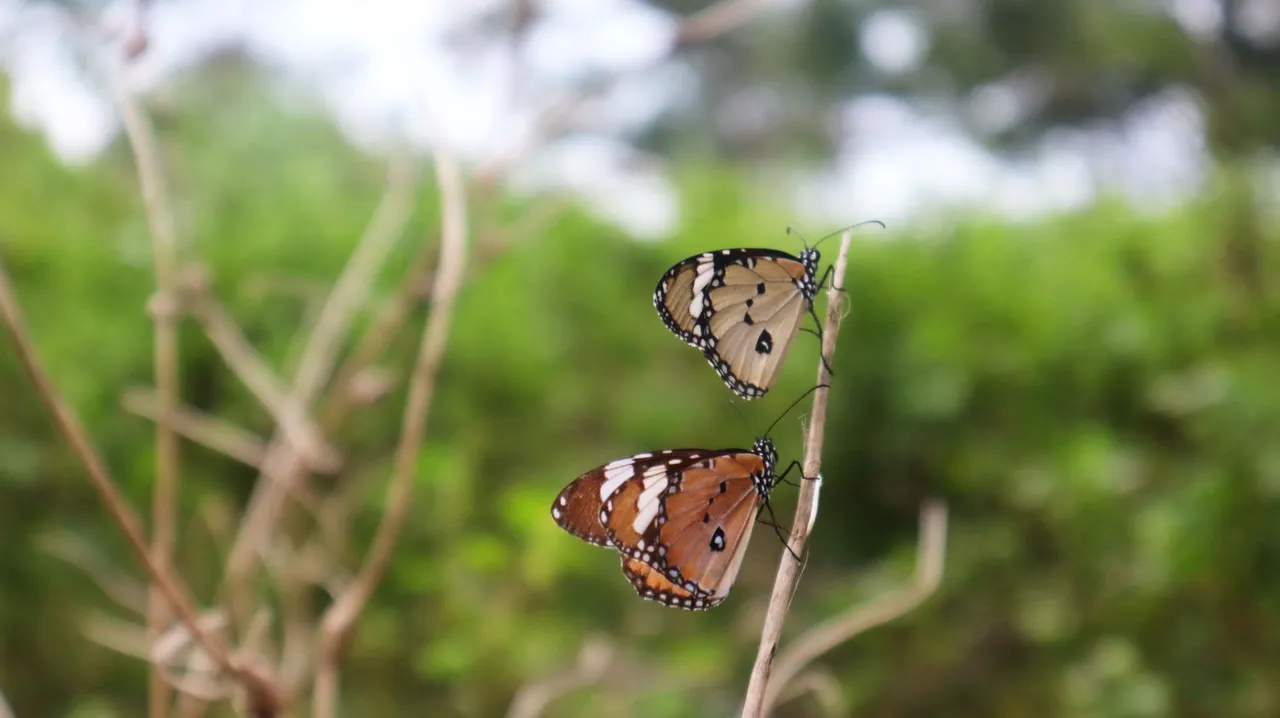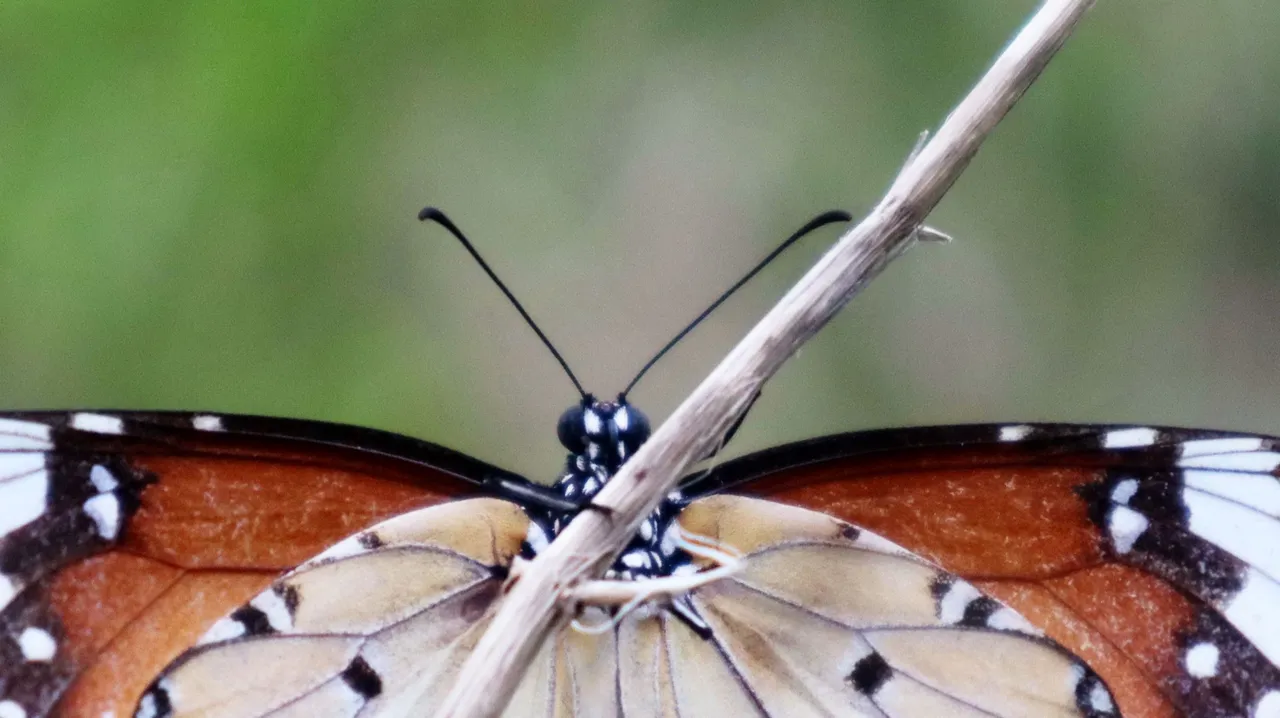
The four wings are attached to the thorax, as are the six jointed legs. Strong muscles in the thorax allow it to move its wings up and down during flight. It alights on a dry twig in a vertical stance. Was it a signal or was it mimicking something to ward off predators when the wings were spread out then folded and kept like that for a few times. Obviously, it's not perched there to suck up nectar with its straw (with that long thin tubular structure). The special sensors on the feet must have detected that nothing could be sucked in there.
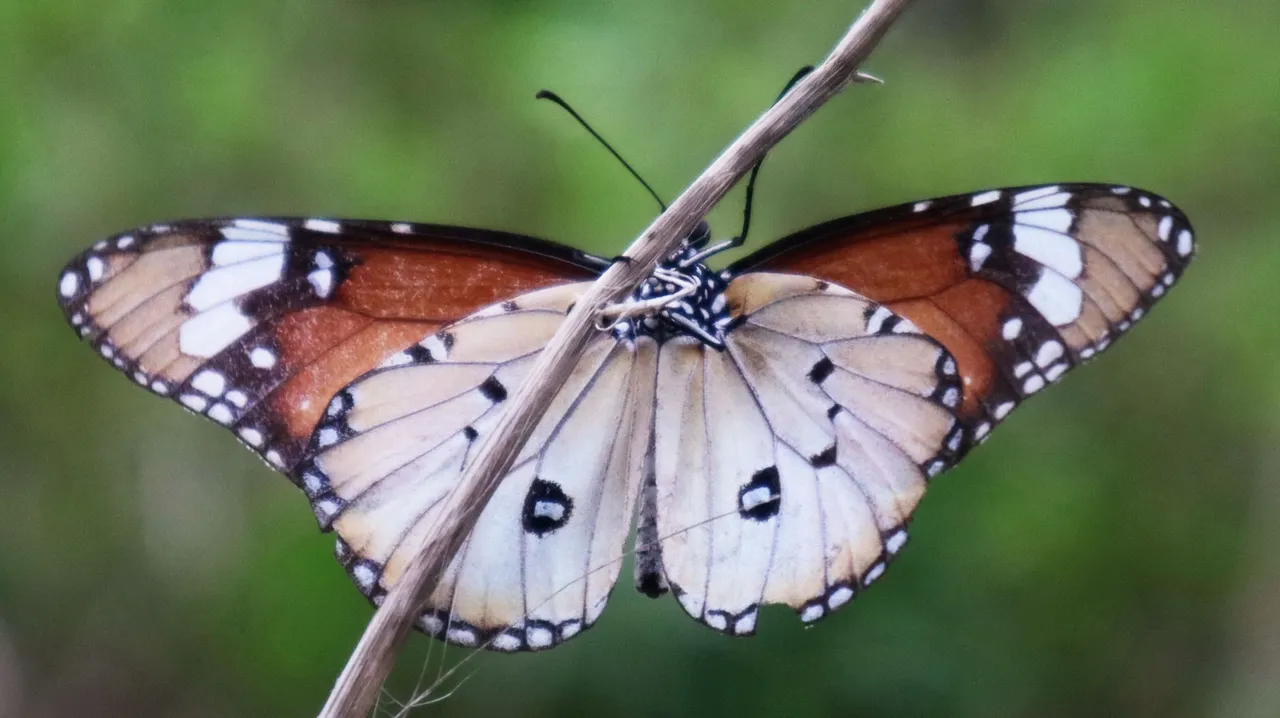
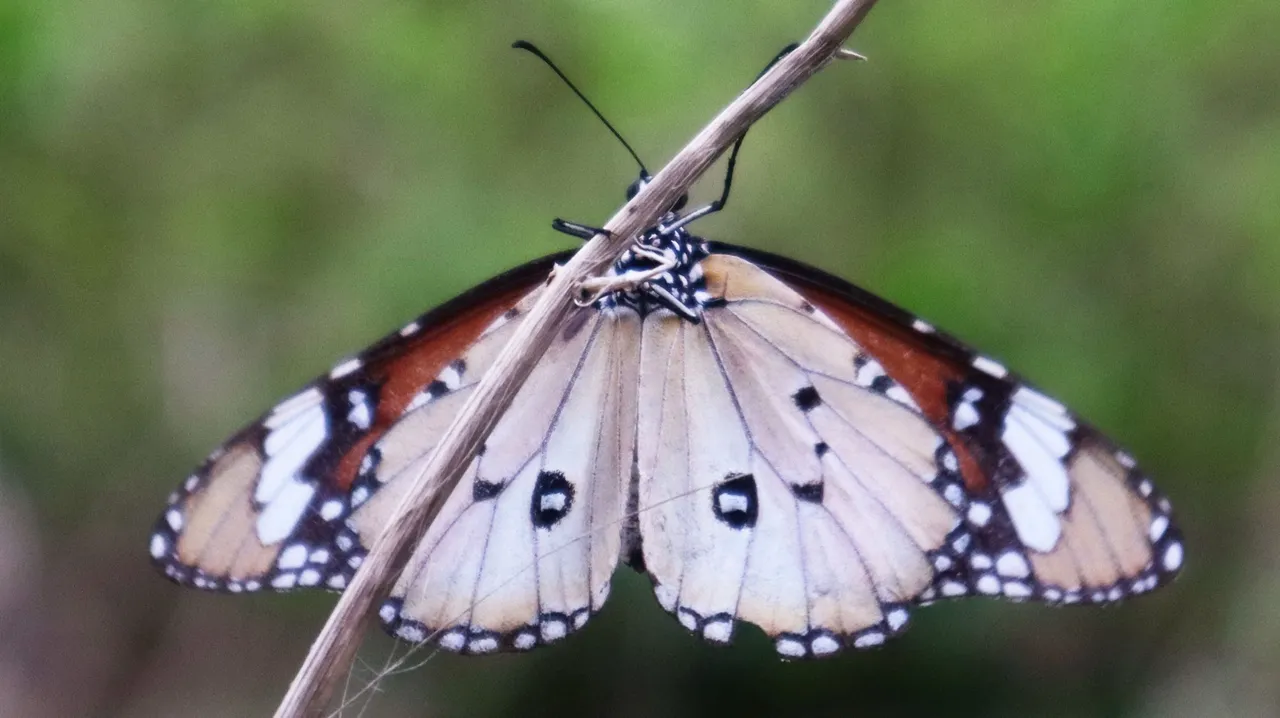

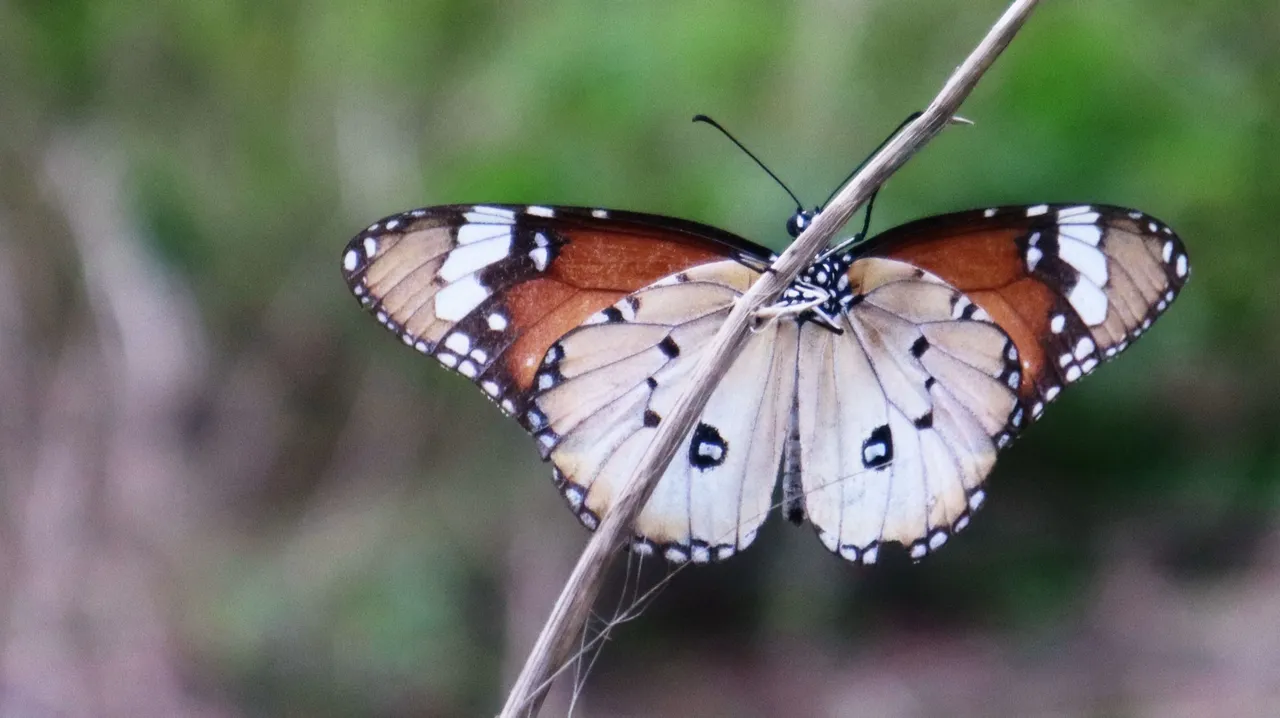
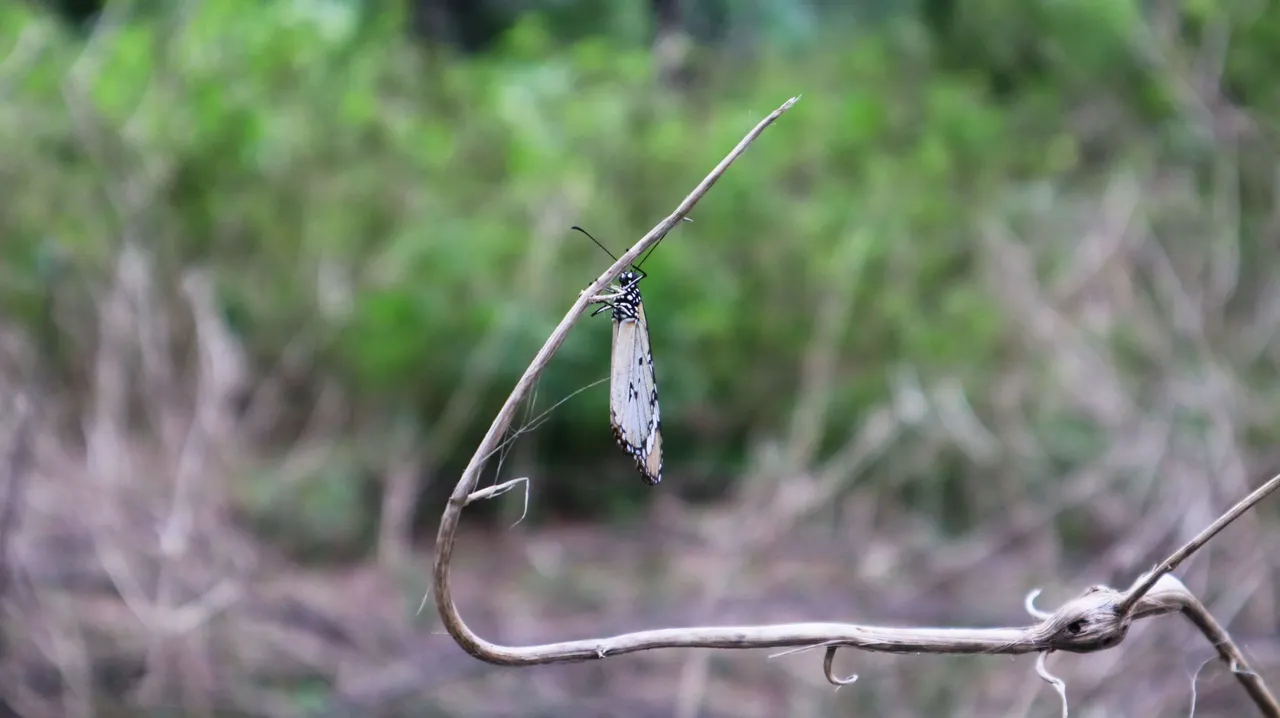
It was then, and it was a Danaus genutia, spreading wings like that, with colors and patterns like that, I was thinking about what I actually saw. Butterfly wings (like the rest of their exoskeleton) are actually transparent because it is a protein called chitin. It's just that chitin is covered by thousands of microscopic scales that are divided into two to three layers. Because of this, butterflies are scientifically referred to as Lepidoptera, which means scaly wings, and they are the only insects with scaly wings. When light hits the layers of scales, it is reflected many times. The combination of all these reflections is what causes the colors and patterns you see in butterflies. The scales are responsible for the butterfly's characteristic coloration, as well as for helping the air flow along the wings during flight, and for absorbing heat from external heat sources for the cold-blooded body to function, as well as a defense mechanism. Because of the importance of the wings, it's probably best not to touch the butterfly's wings, because it can be fatal to its life. The scales peel off easily.
And this, you're actually looking at the scales and iridescence on Danaus genutia.
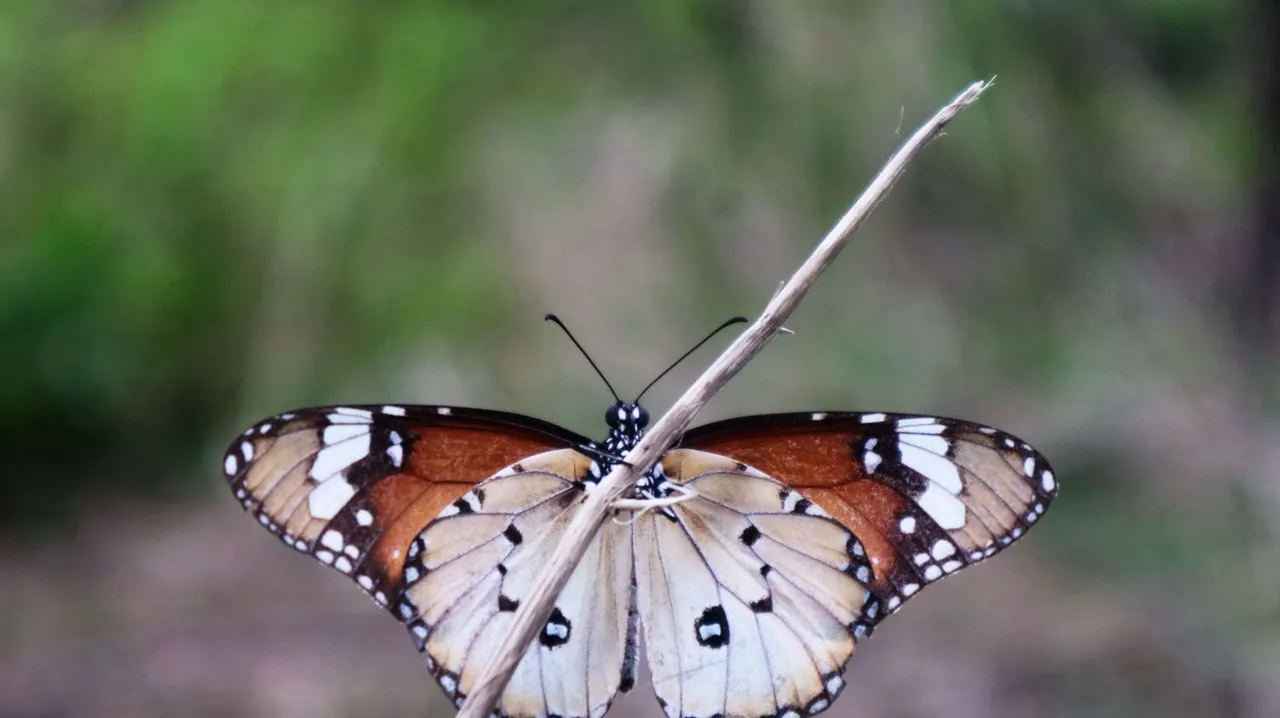
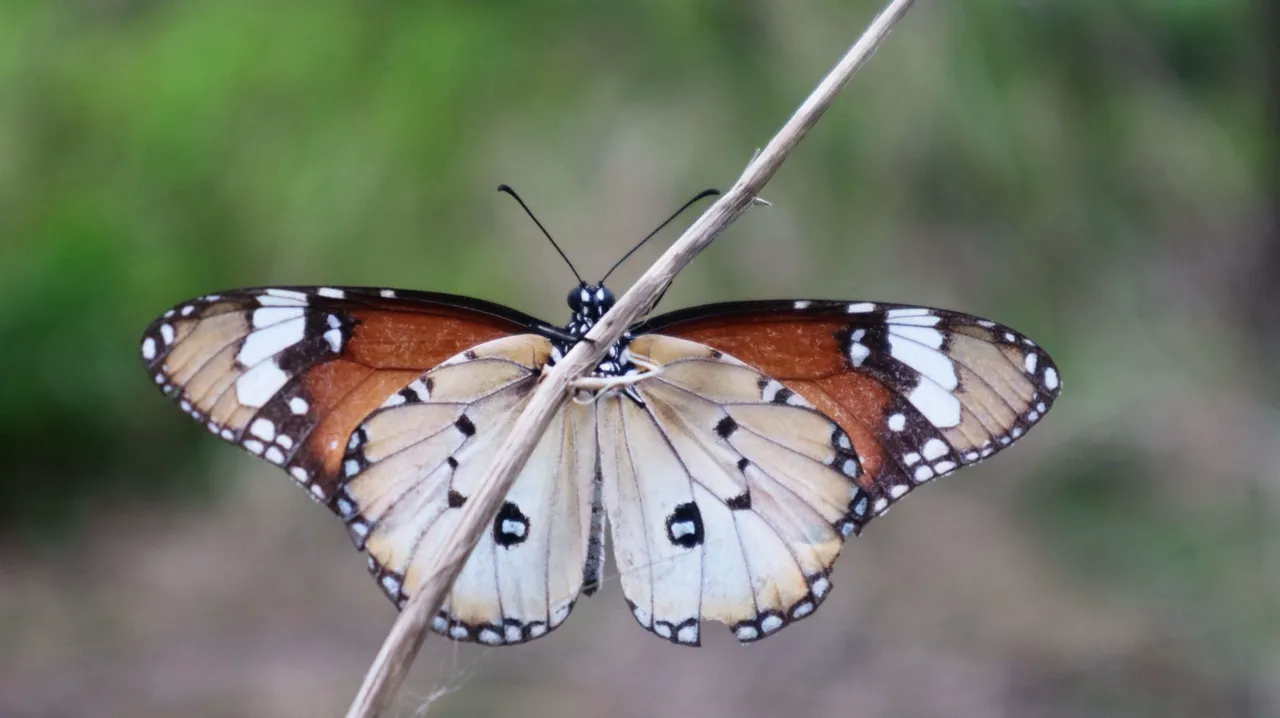
But I also noticed the discoloration of the scales, and the slightly tattered part of the wings. Generally butterflies, as is well known, live only a few weeks (about three to four weeks), and I think, this one is already in its final weeks. It may be using the remaining time of its life for additional mating opportunities, because that is what is necessary; continuing the existence of his species was of utmost importance!
(Reading sources: Flying facts; 10 fascinating facts about butterflies; Will a butterfly die if I touch its wings?; Where do butterflies get their striking colors?; Danaus genutia)
